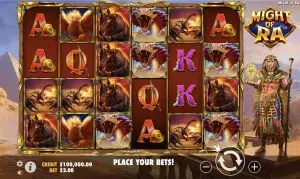One of the most common mistakes baccarat players make is betting on a tie. The allure of an 8:1 payout might seem tempting, but the house edge on tie bets is typically around 14.36%, significantly higher than betting on the Player (1.24% house edge) or the Banker (1.06% house edge). Understanding and avoiding poor bets is crucial for success at the baccarat table.
Mastering the Basic Gameplay
In baccarat, the objective is to bet on which of two hands — the Player or the Banker — will have a total closest to 9. Cards 2-9 are worth their face value, 10s and face cards count as zero, and aces are worth one point. If a hand’s total exceeds 9, the score adjusts by subtracting 10 from the total.
Choosing the Right Bet
While the Banker bet comes with a 5% commission on wins due to its lower house edge, it often presents the best opportunity for sustained gains. Statistically, the Banker hand wins slightly more than 50% of the time. Leveraging this bit of information can help tilt the odds slightly in your favor.
Advanced Betting Strategies
Beyond choosing which hand to bet on, employing a betting strategy can enhance your gameplay. However, it’s essential to choose a strategy that fits your bankroll and risk tolerance.
The Martingale Strategy
In this approach, you double your bet after each loss, assuming you will eventually win and recoup all losses plus a profit equal to the original bet. It’s effective but risky and best suited for players with a sizable bankroll and those playing at tables with high maximum bets to accommodate potentially steep bet increments.
The Paroli System
A less risky but potentially rewarding system is the Paroli, an example of a positive progression system. You start with one unit; if you win, double your bet. If you win three consecutive bets, return to your starting unit. The system capitalizes on winning streaks but limits losses during losing streaks.
Bankroll Management
Effective bankroll management is essential in baccarat, as in any casino game. Set a limit for how much you’re willing to spend and stick to it. Splitting your bankroll into units can provide a clear framework for how much to bet each hand.
Using the Session Approach
Determine beforehand how many sessions you plan to play and divide your total bankroll by that number. This method ensures that you have allocated funds for future sessions and helps prevent the temptation of chasing losses.
Increasing Winning Odds
No baccarat system guarantees victories, but understanding odds and probabilities can certainly improve your chances.
Keeping an Eye on the Shoe
In baccarat, the outcomes can sometimes be influenced by the nature of the shoe (the device that holds the multiple decks of cards). If you notice a trend where one side (Player or Banker) wins more frequently, it might be an indicator of a skewed shoe. While not foolproof, some experienced players adjust their bets based on these observed patterns.
Practice Makes Perfect
Online casinos often offer free baccarat games to practice. Use these opportunities to familiarize yourself with different betting strategies without the risk of losing money. The experience gained can be invaluable when playing for real stakes.
Conclusion: Baccarat Takeaways
In summary, the key to improving your baccarat game lies in:
– Avoiding the high-risk tie bet.
– Opting more frequently for the statistically advantageous Banker bet, despite the commission.
– Employing a betting strategy consistent with your financial limits and comfort level.
– Practicing strict bankroll management to ensure longevity and stress-free gameplay.
– Observing patterns in the shoe to potentially guide betting decisions.
Following these strategies won’t eliminate the house edge, but they will help you make more informed decisions and potentially stretch your bankroll further, providing a more enjoyable and potentially profitable baccarat experience. Remember, every session is a new chance to apply these strategies and refine your approach to this classic and thrilling casino game.

















